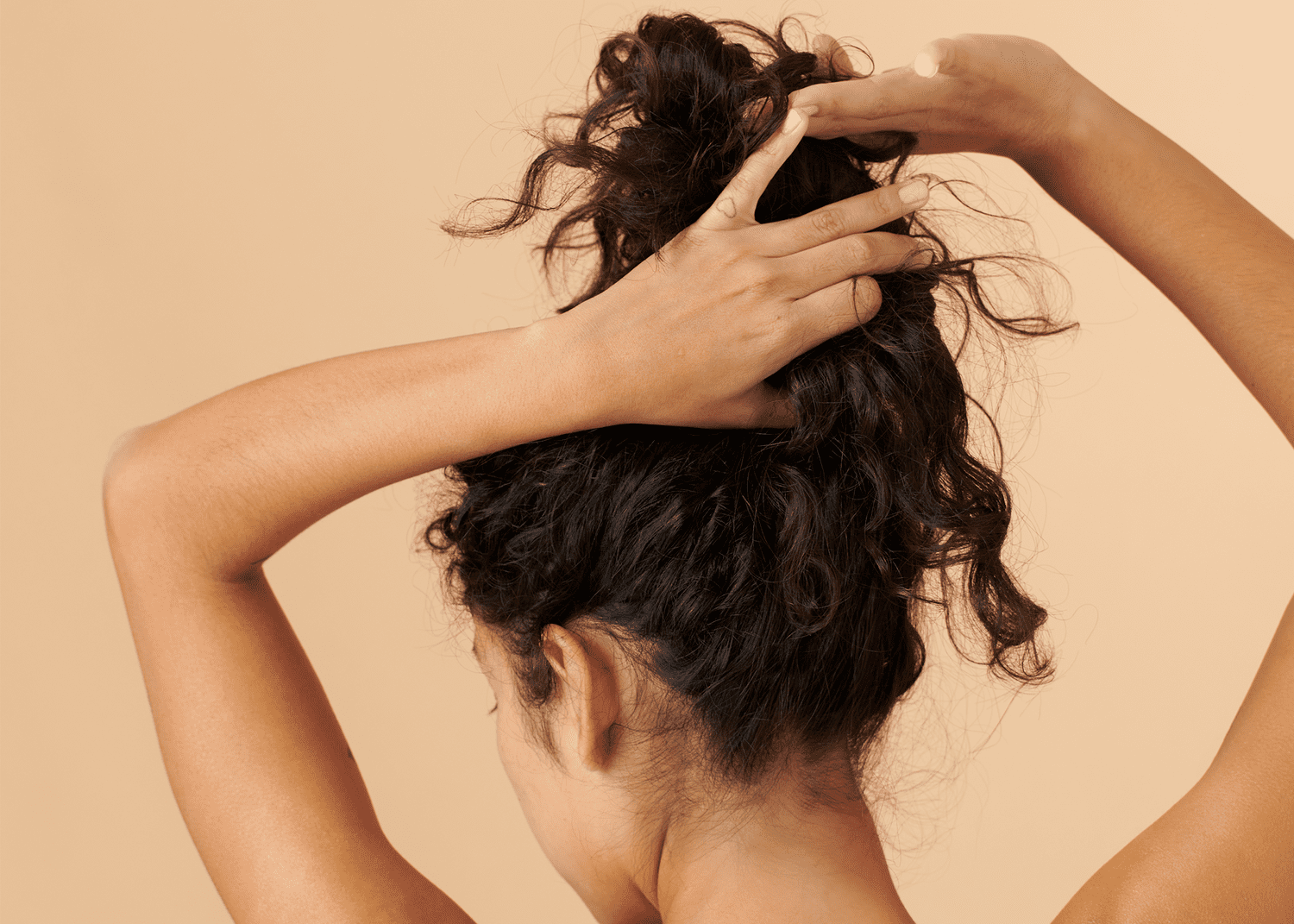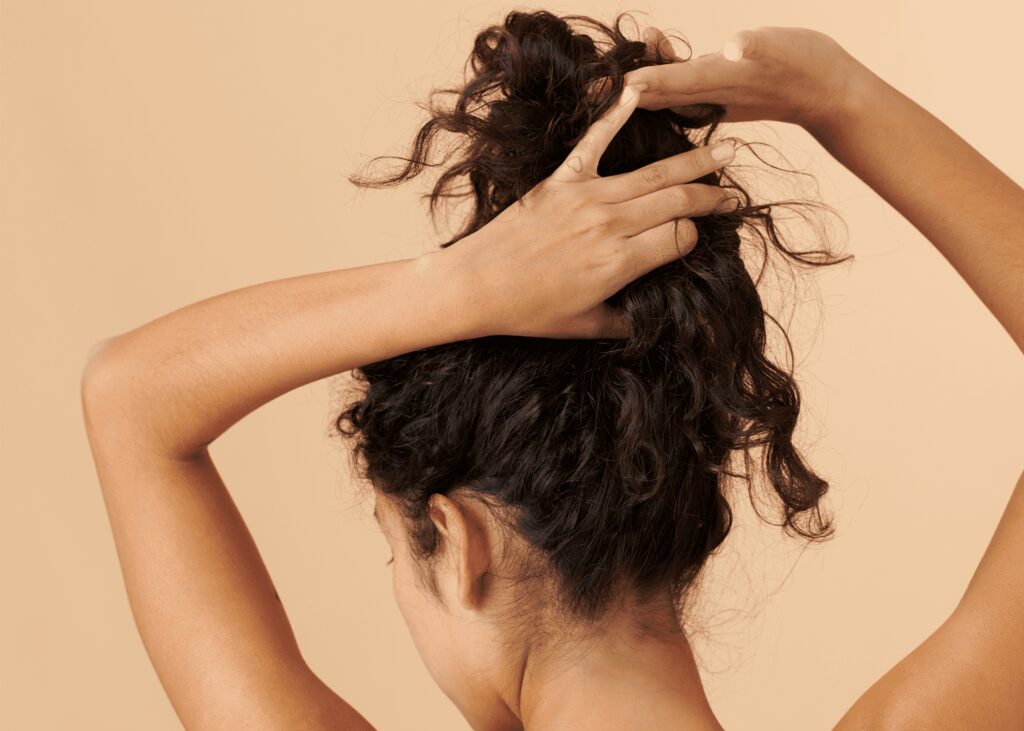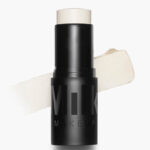
Stocksy
In This Article
Hair Structure 101 Signs Your Hair Needs Protein Signs Your Hair Needs Moisture How to Balance Both Product Reccomendations Final Takeaway
Protein and moisture are both vital components to having healthy hair. Loading up on moisture alone won't provide that healthy bounce we typically lust after and getting a keratin treatment won't stop the hair from frequent breakage. Protein is responsible for the hair's strength and structure, and moisture is responsible for hair's porosity and elasticity. The hair needs a balance of both in order to thrive. While some signs of poor hair health— brittle ends, breakage, frizz— can signify a need to address themselves and switch up our hair care regime, knowing where to begin isn't always as clear. Keep reading for a breakdown of how protein and moisture uniquely equip our strands to be healthy, and how maintaining a balance of both will give you your best hair days yet.
Meet the Expert
- Valery Joseph is the founder of Valery Joseph Haircare and the sought-after Valery Joseph Salons in New York City, Bridgehampton, and Miami.
- Dr. Isfahan Chambers-Harris is a PhD Medical Scientist and Trichology practitioner. She is also the Founder of the award-winning clean scalp and hair care brand, Alodia Hair Care.
Hair Structure 101
Every strand of hair is composed of three layers: the outer layer (cuticle), the middle layer (the cortex), and the innermost layer (the medulla). The medulla is a container for the cells that hold your DNA, while the other two layers are responsible for the protein-moisture balance.
The cortex makes up the bulk of the hair shaft and is primarily made of protein. Inside the cortex, we have disulfide bonds that hold the protein together, which makes the hair strong and resilient. "These bonds also give the hair its natural shape, dictating how curly or straight your hair is," explains Valery Joseph, founder of Valery Joseph haircare and salons. Joseph describes disulfide bonds as the building blocks of the hair, and in order to keep these bonds (and your hair texture) in the best shape, it needs the right amount of protein to hold it all together and provide durability.
The cuticle, that outer layer, is what's responsible for letting moisture in and out. If it remains closed or open, the moisture can't get absorbed. The cuticle needs to be strong enough to open and close to absorb and retain any moisture. This ability to seal hydration is what keeps the cuticle healthy, and thereby keeps the hair's health protected from damage.
Signs Your Hair Needs Protein
Without sufficient protein in the hair, our strands lose their strength and structure. "Hair that lacks protein often looks weak and limp," says Dr. Isfahan Chambers Harris, PhD Medical Scientist, Trichology practitioner, and founder of Alodia Hair Care. "It breaks easily, feels soft and mushy when wet, and lacks a healthy sheen, appearing dull."
Signs of Protein-Deficient Hair:
If you notice or experience any of the following symptoms, consider it a sign that you aren't getting enough protein in your hair:
- Limp and lifeless appearance.
- Increased breakage and split ends.
- Lack of elasticity.
Common Causes of Protein Deficiency:
Health and lifestyle have everything to do with the protein makeup in our strands. According to Joseph, "Things like sun exposure, chlorine, and heat styling all contribute to protein loss in the hair over time." Pre-existing or predisposed medical conditions, such as hypothyroidism or hormonal imbalances, as Dr. Chambers-Harris points out, can also "affect the body's ability to produce and maintain adequate amounts of protein for healthy hair."
- Chemical treatments (coloring, bleaching, relaxers).
- Heat styling and overuse of heat exposure.
- Environmental damage (UV rays, chlorinated water).
- Harsh ingredients (sulfates).
- Poor diet or medical conditions.
How to Test for Protein Deficiency:
If you suspect your hair has a protein deficiency, there’s a very simple way to find out. Joseph gives us a breakdown of how to do what’s called a “stretch test” at home to detect protein deficiency:
- Step 1: Gather a few strands of wet hair between your thumb and forefinger.
- Step 2: Gently tug away from the head.
- Step 3: If the hair has a bit of stretch (before breaking,) this means the hair is healthy. On the other hand, if it snaps right away, the hair is brittle and lacking protein.
Signs Your Hair Needs Moisture
When the hair lacks moisture, it's because the outer layer is either too tightly shut or opened too wide. The vents that sit along the cuticle are supposed to open and close with ease. If they don't, the hair texture's appearance will change in a handful of ways.
Signs of Moisture-Deficient Hair:
If you notice or experience any of the following symptoms, consider it a sign that you aren't getting enough moisture in your hair:
- Rough texture.
- Dull and lifeless appearance.
- Frizziness and tangling.
Common Causes of Moisture Deficiency:
"Moisture deficiency is often caused by several factors," says Dr. Chambers-Harris. "[These can include] dry weather and low humidity, harsh moisture-blocking hair products, frequent use of heat styling tools such as blow dryers, flat irons or curling irons, dehydration from drinking too little water, and certain health conditions."
- Overuse of heat styling tools.
- Chemical treatments.
- Environmental factors (humidity, sun exposure).
- Dehydration.
- Pre-existing health conditions.
How to Test for Moisture Deficiency:
Our hair’s ability to retain moisture dictates what’s called the porosity of the hair. Porosity may be high, medium, or low and it’s the extreme ends of that spectrum that are going to require some attention and care to restore. Joseph gives us a few tips on hair porosity levels and a step-by-step on how to do a “float test” from home to detect moisture deficiency in the hair:
- Step 1: Take a few strands of clean, detangled hair and drop them into a bowl or glass of water.
- Step 2: If the hair floats to the top, this means you have low-porosity hair.
- Step 3: If it sinks to the bottom, the hair is high-porosity. High-porosity hair is typically genetic, but it’s a great test to see how to better care for your hair type.
How to Balance Protein and Moisture
"Maintaining a proper protein-moisture balance is so important for healthy, resilient hair," notes Dr. Chambers-Harris. "We need protein to strengthen the hair structure, and moisture to ensure softness and elasticity. One is not more important than the other." Incorporating a good balance between the two is a highly individualized process, but our experts have a few tips to consider.
“Incorporate protein and moisture treatments into your rotation by using balancing conditioners that contain both moisture and small amounts of protein,” Dr. Chambers-Harris suggests. “Most hair types benefit from weekly deep conditioning with moisture-rich products and occasional protein treatments every 3-6 weeks.” If your hair doesn’t have a deficiency in one area, address the other. There’s no need to overcompensate. Taking small steps, one at a time, and then testing to see its progress, will help you get back on track.
Aside from the products being used to meet your hair’s unique needs, there’s the internal health to be mindful of. “Hair health starts from within,” says Dr. Chambers-Harris. “And that includes a healthy diet rich in protein, healthy fats, and vitamins.” A well-balanced diet will greatly help to maintain the natural balance of protein and moisture in the hair.
How to Choose The Right Products
Depending on what your hair needs, there are certainly products out there to accommodate. Using protein-rich or moisture-rich products appropriately can be helpful, while an overuse may be just as harmful. If it's not broken, don't try to fix it. Below, our experts call out helpful ingredients to look out for.
Protein Heavy Ingredients
There are an array of protein treatments for hair on the market. According to Dr. Chambers-Harris, these are the ingredients you want to seek out when trying to revive a protein deficiency and how they are uniquely equipped to help.
- Keratin: Keratin makes up about 90% of the hair’s structure. Applying this primary protein topically helps replenish what’s lost, strengthens the hair shaft, reduces breakage and restores elasticity.
- Hydrolyzed Wheat Protein: This ingredient rebuilds strength in the hair “by binding to natural proteins. It fills in weak spots and gaps in the cuticle and can improve moisture retention, add volume and smoothness.”
- Hydrolyzed Silk Protein: This protein is derived from the silk of silkworms! It contains sericin and fibroin which are amino acids that can bond with the hair’s keratin and help to rebuild a protective barrier.
- Amino Acids: Amino acids can penetrate the hair shaft and rebuild damaged protein structures, enhancing the hair’s resilience to future damage.
- Collagen: Collagen is a protein found in skin and connective tissues, including the scalp. Adding this ingredient into your hair care routine will promote a healthy environment for growth as well as add a protective film around each strand to enhance strength and flexibility.
Moisturizing Ingredients
When looking for products to add moisture back to the hair, Dr. Chambers-Harris suggests looking for the ingredients below.
- Hyaluronic Acid: This naturally occurring substance found in the skin and connective tissues has powerful water retention properties and can hold up to 1,000 times its weight in water, making it an excellent humectant (a substance that draws moisture from the environment into the hair).
- Aloe Vera: This plant’s gel-like sap is rich in water, vitamins, minerals and enzymes, all of which help the hair retain moisture. Because it is about 98% water, this ingredient is a great natural hydrator that will instantly replenish.
- Glycerin: This natural humectant is derived from plant oils or animal fats. Glycerin attracts moisture from the air and binds it to the hair to help maintain hydration and prevent deficiency.
- Honey: Another natural humectant and emollient, honey’s high sugar content is a great moisturizing agent, binding moisture to strands similar to glycerin. Honey also smoothes the hair shaft and seals the moisture in, resulting in softer, shinier hair.
Products Based on Hair Type
When it comes to choosing a moisturizing product, you want to address it based on your porosity level, not just your hair type. “Low porosity hair can be moisture deficient as it can have a harder time absorbing hydration,” says Joseph, “so lightweight moisturizing products work best.” Highly porous hair that can typically be drier and frizzier will want to look for denser products, says Joseph, “like hair oils and leave-in conditioners.”
For protein-deficient hair, Joseph recommends the Valery Joseph Heal Shampoo and Heal Mask “to preserve the internal structure of the hair and help repair any damage.” Jospeh’s line of hair care includes products that are formulated with a proprietary VJR5 Pro Complex which contains keratin proteins to help rebuild strength, making it a great option for chemically treated hair.
Final Takeaway
Protein and moisture work together to uphold hair's strength and elasticity. If you notice unfavorable characteristics in the hair that signify a lack of protein or moisture, do a quick test at home to determine what's needed before pursuing a course of action. Just remember, there are so many factors at play and several ways to address what's needed. Overall, doing things like reducing excessive heat styling, getting regular trims, and maintaining a healthy diet will impact your hair's protein-moisture balance in the best way.


